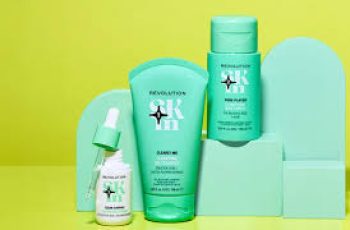
Yes, lactic acid can be used alongside other AHAs (Alpha Hydroxy Acids), but it requires a bit of caution and thoughtful application. Lactic acid itself is a milder AHA, which means it has a larger molecular size than other AHAs like glycolic acid and thus tends to be less irritating. However, combining it with other AHAs can still pose risks, particularly if your skin is sensitive or if you’re new to exfoliating acids.
What Is Lactic Acid?
Lactic acid is a chemical exfoliant that works by gently sloughing off dead skin cells from the surface. It also acts as a humectant, drawing moisture into the skin to maintain hydration. This makes it effective for addressing issues like:
Fine lines and wrinkles
Uneven skin tone
Acne and clogged pores
Dryness and dullness
It is considered a gentler option compared to stronger AHAs like glycolic acid, making it suitable for all skin types, including sensitive skin.
Can You Mix Lactic Acid with Other AHAs?
While combining multiple AHAs like lactic acid with glycolic acid or mandelic acid isn’t inherently dangerous, it’s essential to approach this combination carefully to avoid over-exfoliating or irritating the skin.
Here are a few methods you can follow if you want to use lactic acid with other AHAs:
Alternate the Time of Day:
Use lactic acid in the morning and glycolic acid or another stronger AHA in the evening. This allows your skin to recover and stabilize between applications, and helps prevent irritation.
Wait Between Applications:
If you want to use both lactic acid and another AHA on the same day, apply one first and wait 10–15 minutes before applying the other. This ensures that the product has time to absorb and that the skin’s pH has balanced out before applying the next active.
Layer Carefully:
If you decide to use both acids at once, start by applying the thinnest consistency product first, which is typically lactic acid in a toner or serum. Follow with a thicker product, like a glycolic acid cream or treatment.
Is Lactic Acid Safe After an AHA or BHA Peel?
No, it’s not recommended to use lactic acid after an AHA or BHA peel. Chemical peels are professional treatments that typically use much higher concentrations of exfoliating acids. After a peel, your skin needs time to recover and regain its strength. Using an additional acid (like lactic acid) immediately after a peel could lead to over-exfoliation, causing irritation, redness, and even damage to the skin barrier.
Can You Use Lactic Acid Every Day?
Yes, you can use lactic acid daily, but there are a few things to keep in mind:
Start Slowly: If you’re new to chemical exfoliants, begin by using lactic acid 2–3 times a week to build your skin’s tolerance. Gradually increase frequency as your skin becomes accustomed to the exfoliation.
Watch for Signs of Irritation: Overuse of lactic acid can lead to dryness, redness, or sensitivity. If this happens, scale back to using it every other day or every few days.
Use with Moisturizing Ingredients: Since lactic acid can dry out the skin, always follow up with a good moisturizer to lock in hydration. Pair it with a hydrating serum or cream, especially if you’re using it daily.
Does Lactic Acid Cause Acne?
In some cases, lactic acid can cause breakouts when you first start using it. This is usually a result of the skin detoxifying itself as it sheds dead skin cells. These breakouts are typically short-lived, and the skin will adjust within a few days to weeks.
However, if acne persists or worsens, it might indicate that lactic acid isn’t the best fit for your skin type or acne concerns. In such cases, it’s a good idea to consult with a dermatologist.
How to Add Lactic Acid to Your Routine?
Lactic acid can be found in various skincare formulations, including toners, serums, masks, and moisturizers. Here’s how to effectively add it to your routine:
Apply After Cleansing: Start with a gentle cleanser to remove makeup and impurities. Then, apply lactic acid (typically in toner or serum form) on clean skin. Avoid applying on wet skin, as this can increase irritation.
Layer with Other Products: After lactic acid has absorbed (wait about 10–15 minutes), follow up with other hydrating or soothing products, such as a hyaluronic acid serum or moisturizer.
Use Sunscreen: Since AHAs increase the skin’s sensitivity to the sun, always apply a broad-spectrum SPF 30 or higher sunscreen in the morning, especially if you’re using lactic acid as part of your daily routine.
Summary: Can You Use Lactic Acid and Other AHAs Together?
Yes, but with caution. You can use lactic acid with other AHAs like glycolic acid and mandelic acid, but it’s essential to either alternate their use (morning vs. evening) or wait between applications to avoid irritation.
Avoid combining lactic acid with stronger exfoliants like AHA/BHA peels or using it immediately after such treatments.
Start slowly and gradually build up tolerance to daily use, and always follow up with hydrating products to prevent dryness and irritation.
As always, if you’re unsure how to incorporate acids into your routine or if you’re experiencing any irritation, it’s a good idea to consult with a dermatologist or skincare professional.


